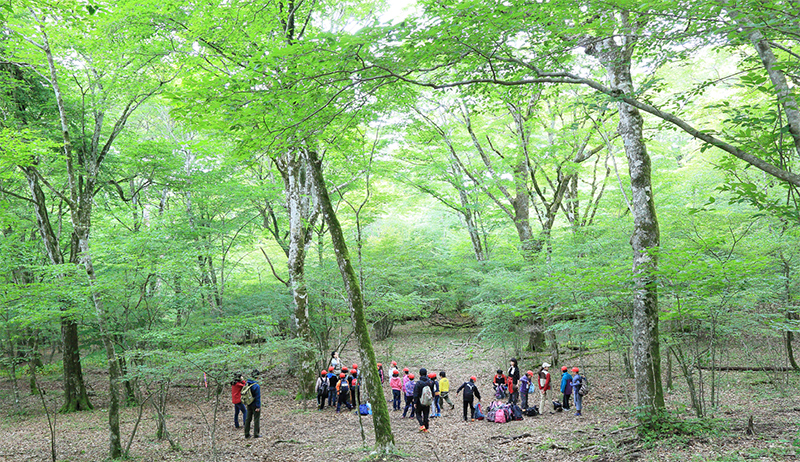Feature: Sumitomo Group’s Initiatives
The Feature section focuses on a particular theme in order to present the Sumitomo Group’s latest initiatives addressing social issues.
Education
We all share a desire to see children grow up happy and healthy. Companies can contribute to children’s sound development through various educational activities, for instance by sending employees to schools to share their knowledge and experience with students, or by organizing school tours of factories or other sites.
Sumitomo Group companies enthusiastically engage in a wide range of creative educational activities devoted to the next generation.
Sumitomo Forestry has been organizing volunteers to help replant the forest at the base of Mt. Fuji that had sustained damage in a typhoon in 1996. The replanted area along with the natural forest and the plantation forest has been christened “The Forest of Learning” and is the venue for an environmental education support project. Sumitomo Dainippon Pharma organizes a program aimed at encouraging secondary and high school students to develop critical thinking skills by using genetic diagnosis as an example of “a topic where there are no definitive right answers.” As part of celebrating its 120th anniversary, Meidensha has donated school buildings and library facilities to villages in Thailand. Indeed, Meidensha has a long history of contributing to communities through education.
The activities of these three companies illustrate the positive benefits of educating children for firms committed to contributing to a more sustainable society. They are consistent with the aspect of the Sumitomo business philosophy concerning "Benefit for self and others, private and public interests are one and the same", which holds that, besides the company itself, business activities should also benefit the nation and society.
